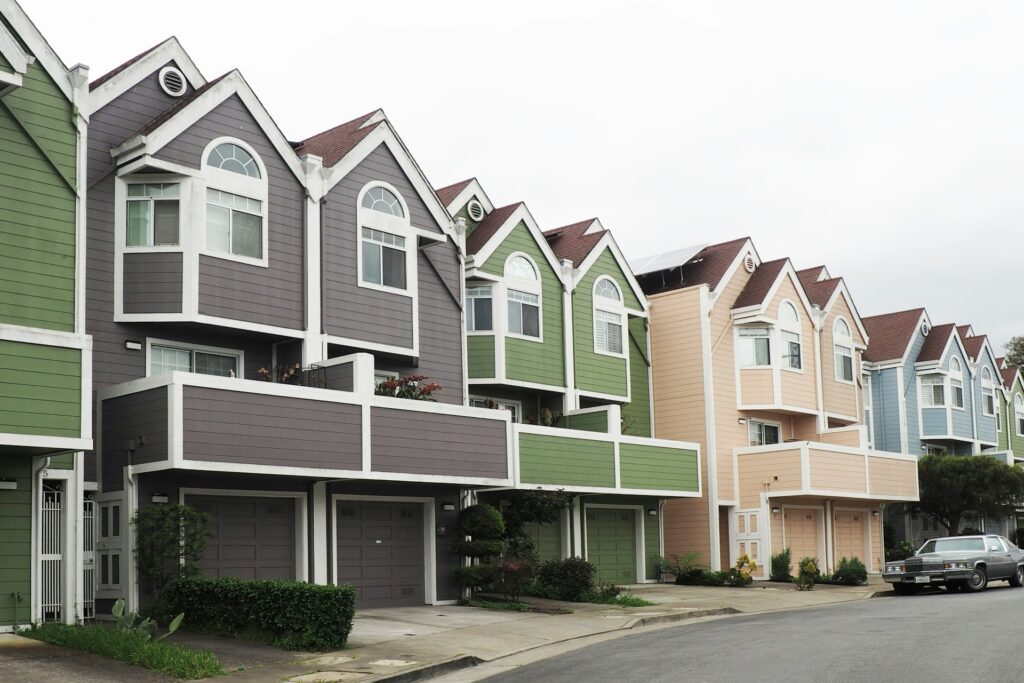
We are reader-supported. When you buy through links on our site, we may earn an affiliate commission.
One of the factors you should consider when choosing a residence is the cost of living in your target location. The same apartment in Biloxi, Mississippi, would cost considerably more in San Francisco. What’s the reason behind the disparity?
Multiple factors determine how much it costs to live in a given state, county, city or neighborhood. Why does the cost of living vary? It depends on one or more of the conditions below.
1. Good, Old-Fashioned Supply and Demand
Probably the most significant factor influencing the cost of living in a specific region is how many people want to live there. It seems like every town in America has at least one ultradesirable zip code.
Sometimes, the appeal consists of little more than the status of living at a specific address. Other locations build a reputation for attracting certain types of people. For example, New York City’s Greenwich Village has long been home to a lively art scene, drawing talent and collectors alike. Santa Fe, New Mexico, shares a similar reputation as a home for artisans of all sorts.
Other locations have unique natural features. It’s no surprise that real estate near the coast often demands much higher prices than properties located further inland. The ocean view and easy access to recreational amenities make such regions a draw. Other places, such as Sedona, Arizona, command top dollar, thanks to the tourist trade and the enchanting red rock vortexes.
Zoning and building codes also play a role, with the number and type of available properties driving population density and real estate prices. More affluent regions tend to limit multifamily dwellings and specify minimum sizes for residences. Nearby zones likewise influence the price. Conflicts have erupted between agricultural interests and residents when the odor from nearby farms affects property values.
The bottom line? It all goes back to Economics 101. Expect prices to rise if there’s a high demand for housing in an area but little available inventory. Conversely, if population shifts lead people to flee to other shores, leaving more empty homes on the market, prices drop.
One exception applies when it comes to new construction. Building average-sized homes in an established neighborhood has little if any effect on average home prices. However, when developers build unusually large homes at a premium, it positively impacts the surrounding property values. The result is most profound in the lowest-priced neighborhoods, giving builders and community developers something to consider when designing new projects.
2. The Magnet Effect
Another factor influencing the cost of living in specific regions is the magnet effect. This term applies to how a large employer moving into an area causes an influx of people to emigrate to the location. Prices tend to increase under these conditions.
One famous example is California’s Silicon Valley. This region is home to over 2,000 technology companies, creating countless high-paying jobs. Understandably, those in the industry flock to the location.
While they might earn higher paychecks, they’ll spend much of their money on housing costs. The median price of a home in this location tops out at over $1.1 million. That’s a considerable amount of green — one that demands a salary to match.
Municipalities sometimes offer considerable incentives to attract and retain employers. However, critics of such programs say they do little to increase economic activity and may suppress local entrepreneurial activity in favor of big business from elsewhere.
3. Transportation Costs
Yet a third factor affecting the cost of living in a given area has little to do with housing, other than how long the average commute may be. Transportation makes up the second-largest household expense for many families. It may entail anything from gas prices to public transportation options.
The same gallon of gas that costs less than $3 in Kansas will set you back more than $4 in Hawaii. Depending on the size of your vehicle, that can equate to an extra $25 to $30 every time you fill your tank.
Depending on the age of your vehicle, you might be subject to emissions testing in some areas. Thirty-four states currently have such requirements. If your car doesn’t pass muster, you may need to modify your exhaust system to make it meet the standard.
Public transportation likewise plays a role in determining why the cost of living varies from place to place. Such infrastructure costs money to complete but can substantially reduce pollution and attract more people. Many of the cities ranked highest in this amenity also feature higher sticker prices on available properties.
While it might not make up the biggest price difference, insurance also plays a role in the varying cost of living. In general, people who live in the country pay less for auto coverage than those who live in big cities. However, rural dwellers rely much more heavily on their cars, given the lack of public transportation options in many such locations.
Finally, those who dwell in urban areas may find they don’t need a car at all. Going without a vehicle means no maintenance and upkeep. Such folks also save a fortune in gas and insurance costs. They also are free from the threat of a single large car repair bill upending their financial apple cart.
4. Utilities
Depending on where you live, certain utilities might cost more. For example, it’s no secret that the arid desert Southwest is in a drought. Most frequently used water sources are being dried up, causing untold headaches for the agricultural industry.
Factors besides the weather can dictate what you pay for electricity, heat and water. Although it may sound counterintuitive, people in lower-income areas often pay more for utilities than those in more affluent areas. One of the reasons has to do with aging infrastructure. Older homes are less energy-efficient than the newer builds drawing affluent young professionals.
Climate also affects what you pay. Currently, dwellings located in the northern region of the United States tend toward higher heating and electricity costs. Those in sunnier areas average lower prices on these amenities while paying more for water. The exception is watery locations like Florida, which enjoys bargains on both counts.
5. Insurance
Each state has unique requirements when it comes to insurance. This rule applies to everything from vehicle coverage to health care. Prices can even vary from region to region within states.
For example, Maricopa County, Arizona, enjoys a thriving health insurance exchange with multiple options to meet your family’s coverage needs if your employer doesn’t offer benefits. However, people in more rural counties may find only two or three plans from which to choose.
In such instances, individuals often face a challenging choice. Going without coverage leaves them vulnerable, as more than two-thirds of American bankruptcies occur at least in part due to medical bills. However, they may find themselves likewise straddled with a policy they can’t afford to use, meaning they skip seeing their doctors and go without necessary care.
Minimum vehicle coverage requirements likewise vary from state to state. Nearly every state requires you to carry bodily injury coverage for accidents and people, along with property damage. However, the amount of protection you need for each varies. For example, Florida doesn’t require you to carry any bodily injury coverage, but Texas requires $30,000 for people and $60,000 for accidents.
Homeowners’ insurance rates likewise vary, often influenced by the natural disasters prevalent in the region. Those living in Oklahoma’s tornado alley pay an average of $4,445 in annual premiums, while someone dwelling in Arizona pays about $1,976.
6. Child Care
Child care costs also vary from state to state and region to region. In general, those residing in more affluent areas will pay higher rates. This effect occurs primarily due to proximity. Parents don’t want to drive far from home to drop their children off at day care, and workers require higher salaries to keep up with the cost of living in such areas.
Annual child care costs in coastal regions often cost well upwards of $10,000 per year. The least expensive state for day care is Mississippi at $5,110, followed by Alabama at $5,593. Of course, the average salary in the latter two states ranks far below what those in New York or California bring home with each paycheck. Whichever way you slice it, it costs a pretty penny to have a child.
7. Schools
Another factor influencing why the cost of living varies is the quality of education available in the region. This rule applies to both public and private schools.
In general, properties located in regions with well-funded public school systems demand higher prices. However, the ways schools are funded can also perpetuate income disparities. For example, areas that partially finance education through property taxes often find that districts with higher housing costs enjoy better teacher salaries and vastly improved amenities over those in more impoverished areas.
School choice can also influence real estate prices. Many parents appreciate having multiple options for their little ones, especially in today’s pandemic era. Places with a mix of public, private and charter schools can demand higher sticker prices thanks to the draw for young families.
8. Taxes
Taxes also influence the cost of living. However, it isn’t the rate you pay alone. It’s what you get in exchange for your tax dollar that determines the ultimate price and value to you.
People tend to think of higher taxes as universally bad. However, when these monies fund a thriving infrastructure system, your transportation costs decrease. When they pay for better schools, the result is a well-educated workforce that can command higher salaries — and buy more homes.
The trick ultimately comes down to determining what matters most to you. If you rely on public services, living in an area with high tax rates but stellar community facilities makes sense. If you don’t use such amenities, you might feel drawn to locations with lower tax rates.
Why Does Cost of Living Vary? It Depends on Multiple Factors
Why does cost of living vary from place to place? It all depends on the eight factors above. Ultimately, where you live reflects your values and what matters most to you.










